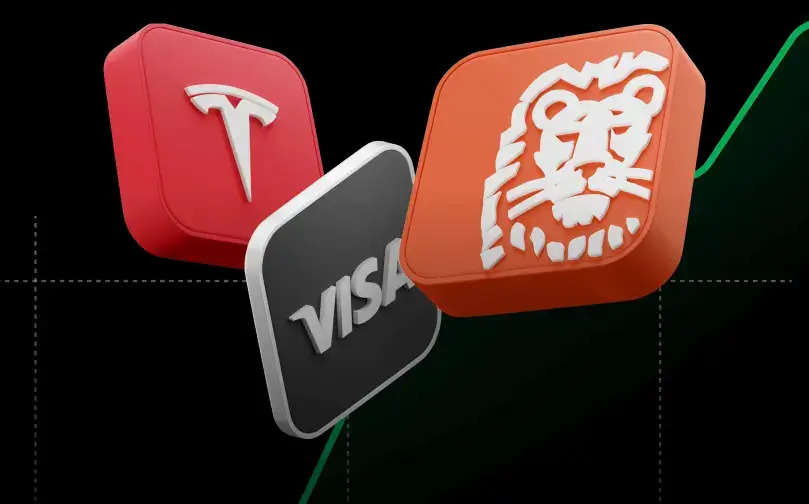Summary:
-
Norwegian inflation surprisingly accelerates in July underpinning odds for a rate hike next month
-
Swedish price growth remains sluggish receding chances for the tightening onset this year
-
Both NOK and SEK fall against the US dollar, but the former seems to have the better outlook
The major attention on Friday is paid to Turkey as its currency crisis begins spilling abroad raising concerns over the financial position of some European banks having the largest exposure to Turkey. Nonetheless, the newest inflation data from Norway and Sweden deserve attention as well, and this is especially true when it comes to the Norwegian monetary authorities which prepare for an interest rate hike as soon as September.
Start investing today or test a free demo
Create account Try a demo Download mobile app Download mobile app Norwegian inflation sped up in July strengthening the case for a rate rise next month. Source: Macrobond, XTB Research
Norwegian inflation sped up in July strengthening the case for a rate rise next month. Source: Macrobond, XTB Research
The data released from Norway this morning showed that headline price growth accelerated to 3% from 2.6% in annual terms smashing the median estimate pointing to no change in July. On a monthly basis CPI increased to 0.7% from 0.6% while the consensus had forecast a decrease to 0.3%. Moreover, the hawkish tone of the reading is also enhanced by underlying inflation which jumped to 1.4% from 1.1% and to 0.6% from 0.4% in annual and monthly terms respectively (both well above expectations). Thus, one may conclude that the last month CPI increase was not just due to temporary increases in energy and food prices. Indeed, looking at the details one may identify that food and drinks prices contributed the most to the July’s pick-up increasing 3.6% MoM while transport prices jumped 1.4% from 1.1% MoM as companies were taking in higher energy prices. Nevertheless, we also got a healthier increase in the household category where prices rose 0.9% reversing their 0.1% decline registered in June. On the other hand, clothing and footwear prices subtracted from growth falling 6.8% in monthly terms, the deepest decline since January. By and large, the July’s inflation report appears to be consistent with the Norges Bank’s stance regarding a rate increase already in September. Note that the July’s inflation numbers were at the vicinity of the upper bound of the central bank’s forecast. On that account one may expect that the Norwegian policymakers will deliver a loudly-announced rate increase at their meeting next month but market participants remain skeptic as evidenced by the chart below. One may sump up that the NOK could have still some room to benefit from a move in September while the sole risk for a 25 basis point increase is elevated mayhem across financial markets.
 The market-based likelihood for a rate rise next month remains around 40% despite the stellar inflation reading for July. Source: Bloomberg
The market-based likelihood for a rate rise next month remains around 40% despite the stellar inflation reading for July. Source: Bloomberg
Meanwhile things looked differently in Sweden at the same time. Swedish headline inflation stayed at 2.1% in annual terms and made a 0.5% pick-up from 0.2% in monthly terms. However, unlike Norway we got disappointing number with respect to core inflation as it essentially decelerated to 1.3% from 1.4% in annual terms and the outlook for contractionary monetary policy remains blurry despite a 0.4% rise of core inflation on a monthly basis (up from 0.1% in June). The data showed that food, drink and transport were among categories which added the most to July’s price growth. It may explain why we were not offered any encouraging calculations regarding core underlying inflation. Basically, the sole core category which increased more notably in the last month was culture/leisure rising 2.6% MoM. In other words, one may conclude that domestic-driven inflationary pressures in Sweden were really soft, if any, pushing back the likelihood for the beginning of monetary tightening this year. As opposed to Norway, market participants may be right assigning just the 10% probability to a rate increase in December in Sweden.
 Despite the hawkish inflation numbers from Norway the NOK is losing ground against the US dollar today which stems mainly from the fact that the capital is flowing toward safe haven assets. However, from a technical point of view we could identify that the USDNOK could soon run into a ceiling in form of the resistance at 8.41 being supported by the upper bound of the descending channel. If the Norges Bank sticks to its plan and delivers a rate increase, it would encourage NOK bulls to enter the market pushing the pair lower (keep in mind that a lot could also depend on what the central bank will communicate in its forward guidance). Source: xStation5
Despite the hawkish inflation numbers from Norway the NOK is losing ground against the US dollar today which stems mainly from the fact that the capital is flowing toward safe haven assets. However, from a technical point of view we could identify that the USDNOK could soon run into a ceiling in form of the resistance at 8.41 being supported by the upper bound of the descending channel. If the Norges Bank sticks to its plan and delivers a rate increase, it would encourage NOK bulls to enter the market pushing the pair lower (keep in mind that a lot could also depend on what the central bank will communicate in its forward guidance). Source: xStation5
This content has been created by XTB S.A. This service is provided by XTB S.A., with its registered office in Warsaw, at Prosta 67, 00-838 Warsaw, Poland, entered in the register of entrepreneurs of the National Court Register (Krajowy Rejestr Sądowy) conducted by District Court for the Capital City of Warsaw, XII Commercial Division of the National Court Register under KRS number 0000217580, REGON number 015803782 and Tax Identification Number (NIP) 527-24-43-955, with the fully paid up share capital in the amount of PLN 5.869.181,75. XTB S.A. conducts brokerage activities on the basis of the license granted by Polish Securities and Exchange Commission on 8th November 2005 No. DDM-M-4021-57-1/2005 and is supervised by Polish Supervision Authority.

